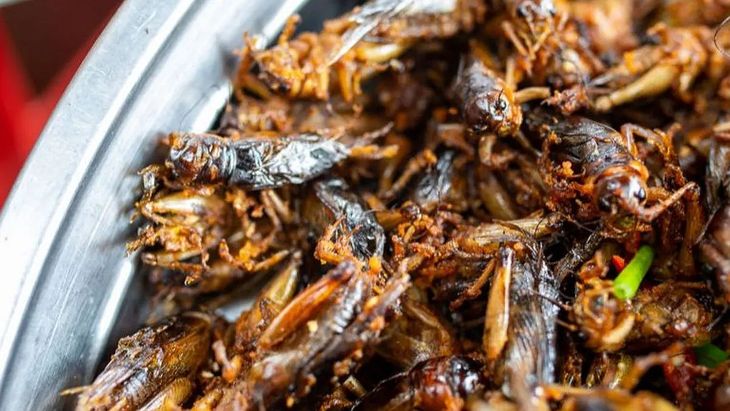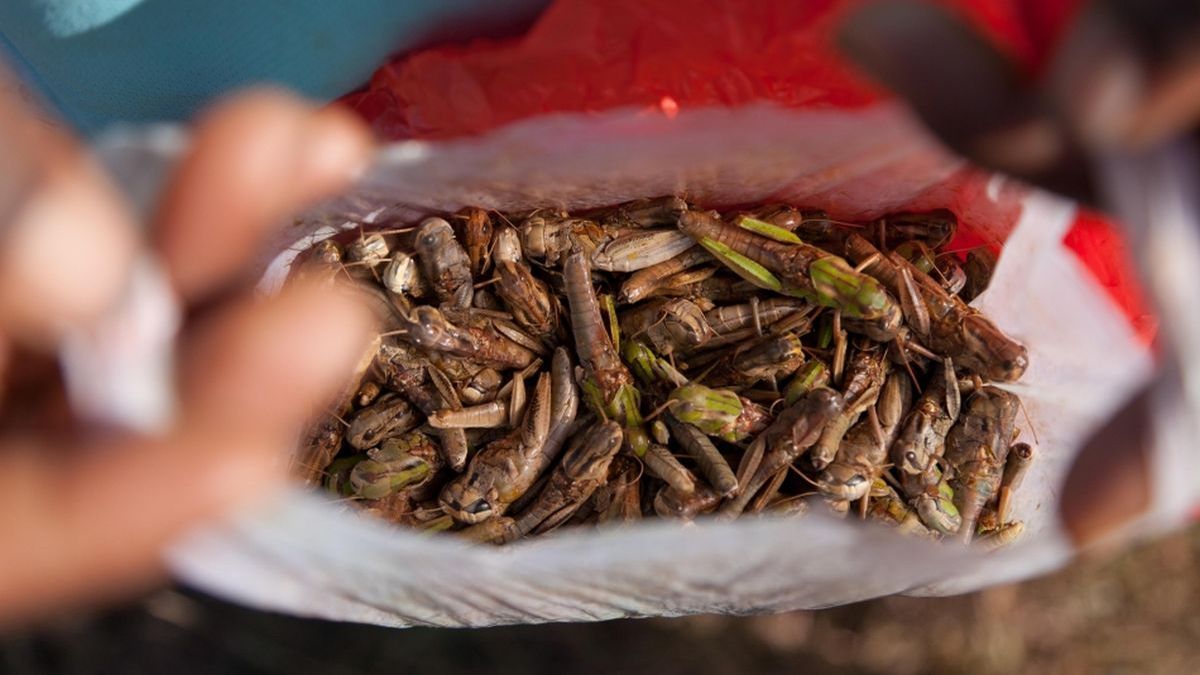The measure generated thousands of comments from consumers and experts who weighed in on the issue. It is not just something that links to health; impacts on production processes, the economy, customs, and the environment.
Many social media users claim that the EU will force people to eat insects added to flour, bread or pasta without their knowledge.
This conclusion stems from the idea that the EU classifies insects as food and does not clearly label if they will be mixed with other ingredients such as flour.
insects-food.jpeg
The EU-approved document says that acheta domesticus, the house cricket powder, will have to be clearly labelled. While the labeling of foods containing the dust should say that this ingredient can cause allergic reactions to those who have allergies to crustaceans, molluscs and dust mites.
According to a 2020 report from the European Consumer Organization, only 10% of Europeans are willing to trade meat for insects.
According to a 2021 YouGov survey, France appears to be the most receptive country to the idea, with 25% of people surveyed saying they are willing to eat food containing bug dust. Very similar is the acceptance in Germany and Denmark.
By contrast, Italy and Poland were the most resistant to the idea with only 17-18% of respondents saying they would be willing to try eating bugs on a regular basis, the lowest figure in the survey.
insects.jpg

There are key issues that must be taken into account beyond gastronomic and cultural aspects to analyze the insect-based food market.
On the one hand, the need for food in a world that has already exceeded 8,000 million inhabitants, and in which natural resources are at risk of becoming insufficient to make life on Earth sustainable.
And then there is the question of the environmental impact generated by the food industry, whatever its origin. Excesses with soybeans deplete soils until they become arid; cattle, whether for food or milk, release large amounts of greenhouse gases into the atmosphere through their flatulence; overfishing is destroying the seas; and a long list of etceteras that we can use as an example.
By case, a quarter of the gases that warm the planet with its pollution come from the production of meat and dairy foods. Cows and sheep belch methane, a potent greenhouse gas, and farmers clear forests to make pastures and grow soybeans, three-quarters of which goes to livestock.
That’s why more and more scientists believe that insects could be the key to curbing the climate change. Insect-based feeds could make up for much of that feed with much less impact on the deaths of those species and climate change.
How many insects are there in the world?
Insects comprise the most diverse group of animals on Earth. Approximately one million different species have been identified, but it is believed that this is almost nothing: 30 million more species would remain undiscovered.
They can be found almost everywhere on the planet. Insects are not only highly diverse, they are also incredibly abundant. Some estimates say that There are 200 million insects for every human being.
The Royal Entomological Society of London, United Kingdom, an organization dedicated to the study of insects and the dissemination of information about them, carried out a study which calculated that On the earth’s surface there are about 10,000 million insects per square kilometer.
The most abundant worldwide are springtails (probably the most numerous animals on earth -and also among the oldest land animals-, since we can find up to 62,000 insects per square meter), proturos, dipluros, archaeognaths or minnows. of copper and the little fishes of silver.
Beetles (Coleoptera), bees, wasps, ants (Hymenoptera), butterflies, moths (Lepidoptera), flies, mosquitoes (Diptera), and Hemiptera (including fleas, cicadas, and bedbugs). of the beds) are, in this order from largest to smallest, the most abundant insects on our planet.
Mosquitoes occupy the entire planet, except Antarctica.
benefits of eating insects
The debate about eating insects is clearly more western, since, in Asia, Africa, and Oceania, they are commonly consumed. There are about 1,900 species classified as edible.
The United Nations Food and Agriculture Organization (FAO) itself highlights the benefits of eating insects.
On his website he explains:
they are nutritious
Edible insects have important nutritional value and can be a healthy element to incorporate into our diet. They offer energy, fat, protein and fiber and, depending on the insect, can be a good source of micronutrients such as zinc, calcium and iron.
Insects can also offer an alternative source of protein to conventional meats. For example, a comparison between beef and mealworms shows that while the amino acid and fat content of meat is higher than that of mealworms, the latter contain comparable values of minerals, and the vitamin content is usually higher.
They are ecologically sustainable
Edible insects have multiple advantages for the environment. For example, raising insects emits considerably less greenhouse gases than most other sources of animal protein and requires substantially less water than raising livestock.
In addition, the amount of land required to raise insects is significantly less than for animal production, and insects are very efficient at converting feed to protein. For example, crickets need 12 times less feed than cattle to produce the same amount of protein.
They offer economic opportunities
In addition to being a source of food, edible insects can provide a livelihood and income. Since insect farming requires minimal space, it can be done in both rural and urban areas, making it advantageous where other agricultural activities are not.
Edible insects are also easily transported and are often easy to raise without specialized training. Therefore, insect farming offers economic opportunities to those with minimal access to land, training and other resources.
They are an underutilized resource
As the world population continues to grow, food production will need to increase, which will inevitably put pressure on agricultural production and on our limited natural resources. We need innovative solutions to meet the global demand for protein and other nutritious food sources, and insect farming offers an opportunity to help meet this growing demand.
The FAO conclusion on eating insects
In conclusion, for FAO “edible insects can help improve nutrition and food security, create new livelihood opportunities and support sustainable agricultural systems. Although they are already consumed in many parts of the world, edible insects still have great economic and nutritional potential that has not yet been fully tapped”.
And invites: “Now that an era of new foods is brewing, why not incorporate this healthy and natural food source into your diet?”.
Source: Ambito
I am an author and journalist who has worked in the entertainment industry for over a decade. I currently work as a news editor at a major news website, and my focus is on covering the latest trends in entertainment. I also write occasional pieces for other outlets, and have authored two books about the entertainment industry.




